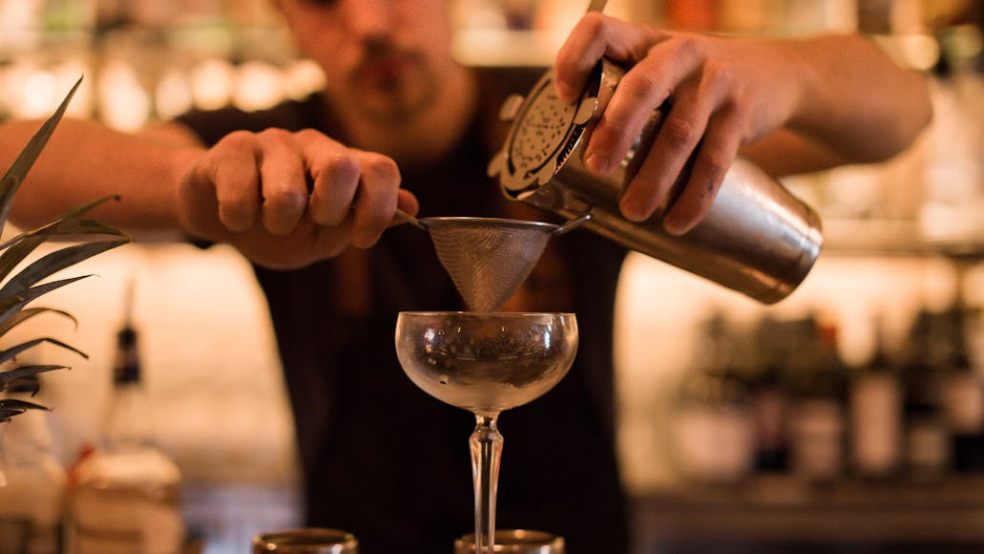
Cocktail Chemistry: The Art and Science Behind Your Favorite Drinks
Cocktails are more than just beverages, rather they’re a delightful fusion of art and science. Mixology, or the craft of creating cocktails, combines precision, creativity, and knowledge of flavor chemistry. It’s a practice that essentially bridges the gap between technical expertise and a sensory experience. Mixology experts offer courses that focus on creating a memorable cocktail class experience for your guests so that you can throw a party like no other.
Imagine crafting a Mojito with the perfect balance of mint and lime or an Espresso Martini that expertly blends both boldness and sweetness. The secret lies in the harmony of flavors, the application of precise techniques, and the smallest touch of flair. Through mixology classes, you can not only enjoy delicious drinks but also gain a healthy appreciation for the artistry and chemistry that is involved. Learn everything you need to know about the art and science behind your favorite drinks to get a sneak peek of what you could learn through mixology courses.
A Dash of History: How Mixology Evolved
The story of mixology goes back centuries with its earliest roots dating back to the 19th century. Cocktails were originally crafted as medical tonics that were designed to cure ailments and invigorate the soul, with these early concoctions combining spirits, herbs, and bitters in order to mask the harshness of alcohol. By the mid-1800s the term cocktail became synonymous with sophisticated and creative drinks with well-known options such as the Old Fashioned and the Mint Julep which emerged during this era.
Fast forwarding to the modern day, though, mixology has become an art form that is celebrated around the world. Modern classes allow enthusiasts to connect with the rich history of the art while also mastering the techniques and recipes that have defined the cocktail culture.
The Science of Flavor Pairing in Cocktails
Every great cocktail is a delicate balance of flavors that are achieved through an understanding of taste chemistry. Humans perceive taste through five primary sensations: sweet, sour, bitter, salty, and umami, and crafting the perfect cocktail involves manipulating these sensations to create a certain harmony.
Use the Margarita, as an example, with its tart lime juice providing acidity, while the sweet triple sec balances the robust flavors of tequila. Similarly, a Negroni blends the bitterness of Campari with the sweetness of vermouth, not the mention the botanical complexity of gin.
Science also plays a role in enhancing the sensory experience of a drink with ingredients like citrus zest or fresh herbs releasing aromatic compounds that can amplify flavor. The Espresso Martini demonstrates this concept by combining the richness of coffee with the smoothness of vodka and a touch of sweetness, thus creating a multi-layered taste experience.
Techniques That Transform: Hands-On Mixology
Mastering mixology requires learning the essential techniques that elevate a drink from simply ordinary to extraordinary. These techniques form the foundation of any great cocktail and are often the highlight of hands-on classes, including:
- Shaking vs. Stirring: Shaking is ideal for cocktails with juices, syrups, or creams, as it aerates and chills the drink, creating a smooth texture. A Whiskey Sour, as an example, achieves its frothy top through vigorous shaking whereas stirring, on the other hand, is used for spirit-forward drinks like the Manhattan, maintaining clarity while evenly mixing ingredients.
- Muddling: This technique involves gently crushing herbs, fruits, or spices to release their natural oils and flavors; with a Mojito, for instance, muddling fresh mint and lime is crucial for infusing the drink with vibrant, refreshing notes.
- Layering and Presentation: A visually stunning cocktail is as much about presentation as flavor, with a technique called layering involving carefully pouring liquids of different densities to create striking visual effects, such as in a Pousse Café.
By practicing these techniques in a mixology class, you can gain hands-on experience that transforms your understanding of cocktails, meaning you’re not only gaining practical skills but also gaining a sense of accomplishment and creativity.
Signature Cocktails and Their Unique Science
Each cocktail tells a unique story with how it’s made and understanding the science behind its creation makes it even more enjoyable. Here are some standout examples:
- Margarita: This iconic tequila-based cocktail balances acidity, sweetness, and alcohol strength. Salt on the rim of the glass doesn’t just add flavor, rather it enhances the sweetness and masks bitterness, making the drink more enjoyable.
- Espresso Martini: This modern classic combines vodka, coffee liqueur, and fresh espresso, with the frothy layer on top being achieved through emulsification, which is a process that traps tiny air bubbles and creates a velvety texture.
- Kir Royale: A sparkling wine cocktail featuring creme de cassis, this drink demonstrates the role of carbonation in enhancing flavor perception as bubbles carry aromatic compounds to the nose, thus intensifying the sensory experience.
Classes typically include variations on these classics, with a Millionaire Mojito being an excellent example. This drink variant swaps soda water for champagne to provide a luxurious twist on a classic. By exploring these recipes, you can learn how to mix drinks but also how to innovate and personalize them.
Sipping Smarter, Sipping Better
Cocktail-making is an art form that blends history, science, and creativity effectively together to create unique blends. By understanding the chemistry behind your favorite drinks, you can enhance your appreciation for mixology all while elevating your home bartending skills.
Regardless of whether you’re a seasoned cocktail enthusiast or a curious beginner, there’s always more to discover when looking at cocktails. Take the plunge and book a mixology class to experience the magic of cocktail chemistry for yourself. With every shake, stir, and sip, you’ll deepen your love for the craft and create memories that last a lifetime. It will also allow you to show off unique skills at your next dinner party which will leave people talking long after the party comes to an end.














